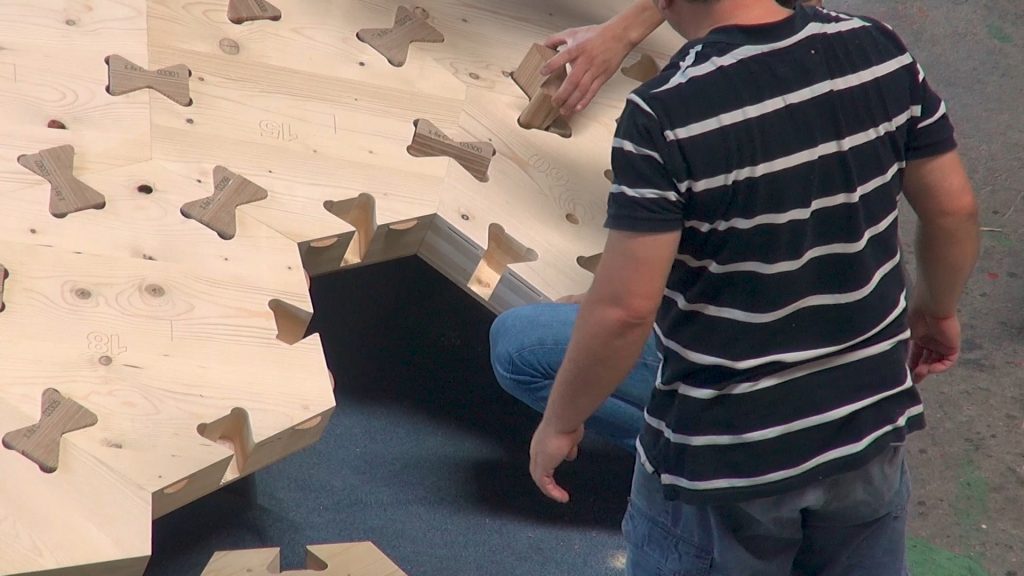
Design for Assembly / Rapid Assembly for Prefabrication
Our research into integrally attached timber structures is focused on digital design tools and automated prefabrication technology, in order to allow for a more rapid and precise assembly on site. The basic concept is the joining of parts through their form, instead of additional connectors. It allows to embed the assembly infor- mation into the shape of the parts, acting as integrated assembly guides. Further- more, the sequence of assembly can be used for the mutual interlocking of parts.
In traditional timber construction, there was a wealth of such form-fitting joints. During the industrialization, early machine technology was not capable of producing com- plex shaped joints. Hence, the integral methods were replaced by mass-produced steel connectors. Only recently, with the second digital revolution, automatic joinery machines have been introduced, which are bringing back integral joining techniques to timber frame construction with linear wood elements. By reducing metal fasteners, timber structures can not only be produced and assembled with greatly reduced manual labor, but reversible connections and mono-material structures also simplify the disassembly and recycling. This allows for the vital “cascade usage” of timber structures, where the material is first used for a building lifecycle, before going into energy production.
Digital Technology for more efficient Structures
Facing a growth of the world population by another 2.5 billion people until 2050, the demand for resources, which has already surpassed earths ability for regeneration, will further increase. At the same time, there will be a great demand for new buildings. The largest part of the non-renewable resources is being used for building products and building constructions. Buildings therefore contribute the largest part to the total carbon dioxide emissions. This makes the use of sustainable building materials critical for the global challenge of reducing CO2 emissions [1].
In this context, wood is a particularly important construction material not only for its carbon dioxide storage, but also for its favorable weight-to-strength ratio and low energy processing. It is therefore an ideal material for sustainable prefabricated struc- tures, which greatly benefit from the possibility of readily available high-tech, high- precision technology in the factories. Also, the low weight of timber makes it ideal for transportation. Currently, building with timber is still slightly more expensive than for other materials and requires particular expertise and skilled workmanship for the design, dimension- ing and especially the on-site assembly [2]. The state-of-the-art alignment and connection of timber parts with screws and steel plates is time consuming and manual labor intensive.
Towards a new Generation of Digital Structures
Our primary research goal is to explore and develop computational tools for the integration of automated design and production processes, embedded into the architectural and structural design process – for a new generation of innovative prefabricated timber structures. Research results are shared with the scientific community, with the students and the industry through journal and conference articles, the organisation of symposia and lecture series, as well as the development of open source and free-to-use software for the architectural design, the structural design and the fabrication of innovative structures.
References
[1] United Nations, 2030 Agenda for Sustainable Development
[2] Kraus, H. Erfahrungen mit Holzbaulösungen im kommunalen Wohnungsbau, Tagungsband 18. Internationales Holzbau-Forum 2012.
